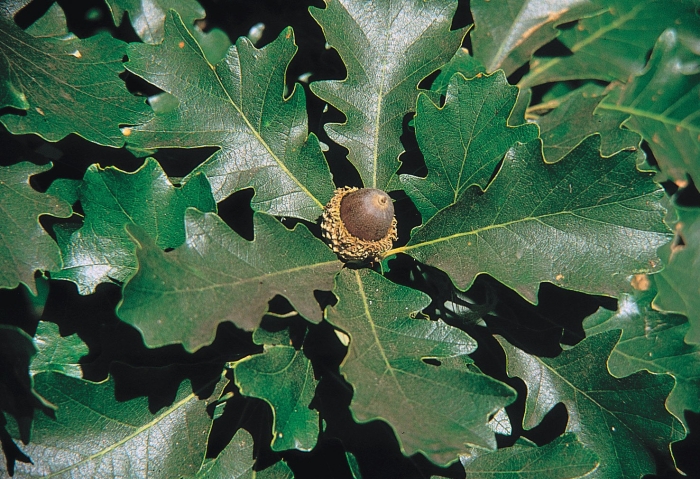Bur Oak
(Quercus macrocarpa)
Bur Oak (Quercus macrocarpa)
/
/

Public domain
Public domain










































































Estimated Native Range
Summary
The Bur Oak is valued for its hardiness and adaptability to a range of urban conditions, making it a popular choice for parks, gardens, and streetscapes. It is one of the fastest-growing white oaks and is particularly tolerant of drought, poor soil, and air pollution. Its deep root system makes it less suitable for areas with shallow, compacted soil or where underground utilities may be present. In cultivation, it thrives in full sun and can handle a variety of soil moisture conditions, from slow and wet to medium and fast-draining. Despite its size, it is relatively easy to maintain once established.CC BY-SA 4.0
Plant Description
- Plant Type: Tree
- Height: 70-125 feet
- Width: 60-80 feet
- Growth Rate: Moderate
- Flower Color: N/A
- Flowering Season: Spring
- Leaf Retention: Deciduous
Growth Requirements
- Sun: Full Sun, Part Shade
- Water: Medium
- Drainage: Fast, Medium, Slow
Common Uses
Bee Garden, Bird Garden, Butterfly Garden, Deer Resistant, Drought Tolerant, Edible*Disclaimer: Easyscape's listed plant edibility is for informational use. Always verify the safety and proper identification of any plant before consumption., Fire Resistant, Low Maintenance, Rabbit Resistant, Street Planting
Natural Habitat
Variety of habitats including bottomlands, floodplains, and dry upland areas
Other Names
Common Names: Burr Oak , Blue Oak , Scrub Oak , Mossycup Oak , Mossycup White Oak , Chêne À Gros Fruits
Scientific Names: Quercus macrocarpa , Cerris macrocarpa , Qercus mandanensis , Quercus macrocarpa f. olivaeformis , Quercus macrocarpa subsp. eumacrocarpa , Quercus macrocarpus subsp. error
GBIF Accepted Name: Quercus macrocarpa Michx.